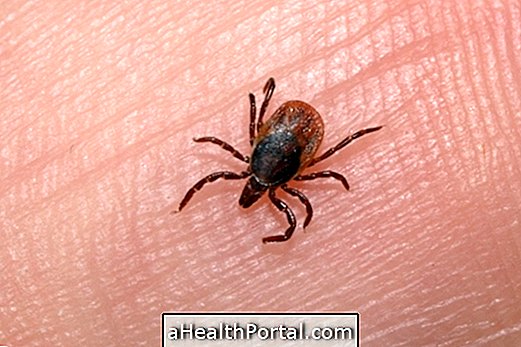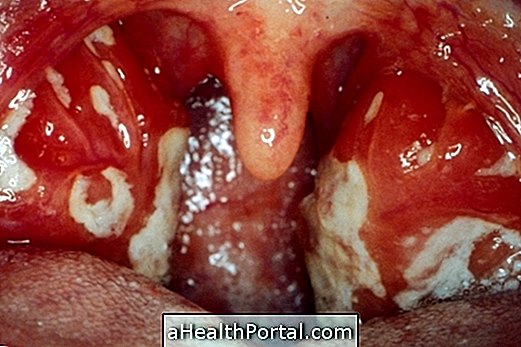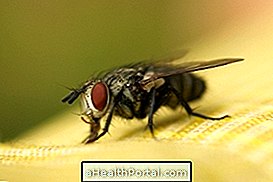Brazilian spotted fever, also known as tick fever, rocky mountain spotted fever, petenquial fever and typhus transmitted by the tick star, is an infection caused by the bacterium Rickettsia rickettsii after a tick bite.
Typically, spotted fever is more common during the months of June through October, when ticks are most active, and it is necessary to be in contact with the tick for 6-10 hours.
Spot fever is curable, but your treatment should be started with antibiotics after the onset of the first symptoms to prevent serious complications such as brain inflammation, paralysis, respiratory failure or kidney failure, which can endanger the patient's life.

Symptoms of spotted fever
The main symptoms of spotted fever include:
- Fever above 39ºC and chills;
- Severe headache;
- Conjunctivitis;
- Nausea and vomiting;
- Diarrhea and abdominal pain;
- Constant muscle pain;
- Insomnia and difficulty to rest;
- Swelling and redness on the palms and soles of the feet;
- Gangrene in the fingers and ears;
- Paralysis of limbs that starts in the legs and goes up to the lungs causing respiratory arrest.
In addition, the development of red spots on the wrists and ankles, which do not itch, but which may increase toward the palms of the hands, arms, or soles of the feet, is common after fever has developed.
Symptoms of spotted fever can be difficult to identify, so whenever it is suspected that you are developing the disease, it is recommended to go to the ER for blood tests and confirm the infection, and start treatment immediately with antibiotics.
The diagnosis can be made with tests such as hemogram, which shows anemia, thrombocytopenia and reduction in the number of platelets. In addition, examination of the enzymes CK, LDH, ALT and AST are also indicated.
How is the transmission of spotted fever
The transmission occurs through the bite of the star tick infected with the bacterium Rickettsia rickettsii . By tickling and feeding on blood, the tick transmits the bacteria through its saliva. But it takes a contact between 6 and 10 hours for this to happen, however the larvae of this tick may also transmit the disease and it is not possible to identify the location of its bite because it does not cause pain, although it is sufficient for the transmission of the bacterium.
In Brazil, most cases occur in the southeast region and the animals that are usually hosts of this type of tick are the capybara and the horse.
When it crosses the skin barrier the bacteria reaches the brain, lungs, heart, liver, spleen, pancreas and digestive tract, so it is important to know how to identify and treat this disease as soon as possible to avoid further complications and even death.
The incubation period varies from 2 days to 2 weeks until the first symptoms appear.
Treatment for spotted fever
The treatment for spotted fever should be guided by a general practitioner and started up to 5 days after the onset of symptoms, usually by taking antibiotics such as chloramphenicol or tetracyclines to avoid serious complications.
Lack of treatment can affect the central nervous system and cause encephalitis, mental confusion, delusions, seizures and coma. In this case the bacterium can be identified in the cerebrospinal fluid test, although the result is not always positive. The kidneys may be affected with renal failure, with swelling throughout the body. When lungs are affected, there may be pneumonia and decreased respiration, requiring the use of oxygen.
Prevention of spotted fever
The prevention of spotted fever can be done as follows:
- Wear pants, long-sleeved sweaters and shoes, especially when it is necessary to be in places with tall grass;
- Use insect repellents, renewing every 2 hours or as needed;
- Clean the shrubs and keep the garden leafless on the lawn;
- Check the presence of ticks on the body or on domestic animals every day;
- Keep pets, such as dogs and cats, disinfected against fleas and ticks.
If a tick is identified on the skin, it is recommended to go to the emergency room or a health clinic to remove it properly and avoid the onset of spotted fever, for example.






















